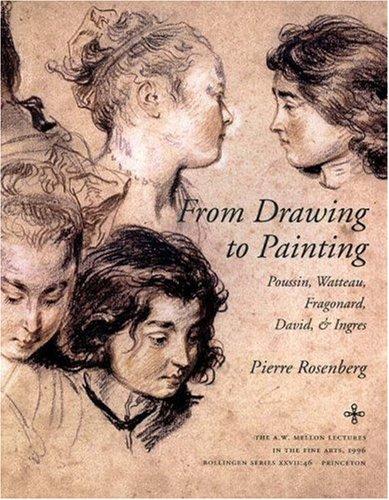
Every year Princeton University Press publishes a book based on the A.W. Mellon Lectures in the Fine Arts given annually by the distinguished scholar chosen for that honor by the National Gallery of Art in Washington, D.C. In 1996 the four lectures were delivered by Pierre Rosenberg. In 2000 these were published in book form as From Drawing to Painting : Poussin, Watteau, Fragonard, David & Ingres.
Reading other Mellon lectures in the past, I have (as I will freely admit) tended to skip around and mostly look at the pictures, but I found myself reading Rosenberg's book cover to cover because his understanding and love of drawing was so engaging. Writing about Rococo art Rosenberg reminded me of Anthony Blunt writing about the Baroque – they take these formerly despised periods or genres and illuminate them so persuasively that the reader's respect is absolutely commanded.

This past spring Rosenberg and his colleague Louis-Antoine Prat curated an exhibition of about 80 spectacular drawings by Jean-Antoine Watteau (1684-1721) at London's Royal Academy. I now have the catalog from that show: Watteau : The Drawings (hardcover shown above, paperback below). Again, the text is so good that skipping through it becomes impossible.

Watteau usually drew in chalk, usually in three colors – red, white, black – on buff-colored paper. From the beginning these intimate works were greatly admired, says Rosenberg. Many connoisseurs preferred them to the finished paintings (as is still the case among Watteau-fans today). I am glad nobody will force me to choose and that I am allowed to like both with equal freedom.
ca. 1716-17
We do have a couple of Watteau's small subtle oil paintings here in San Francisco, at the California Palace of the Legion of Honor. No matter how long or how often I stand and stare, their revelations are never the same twice. My favorite is the modest fête champêtre below. To me at least, it is a sturdy contender for the title of Most Beautiful Object in the Universe (if human granddaughters are excluded from the competition).











